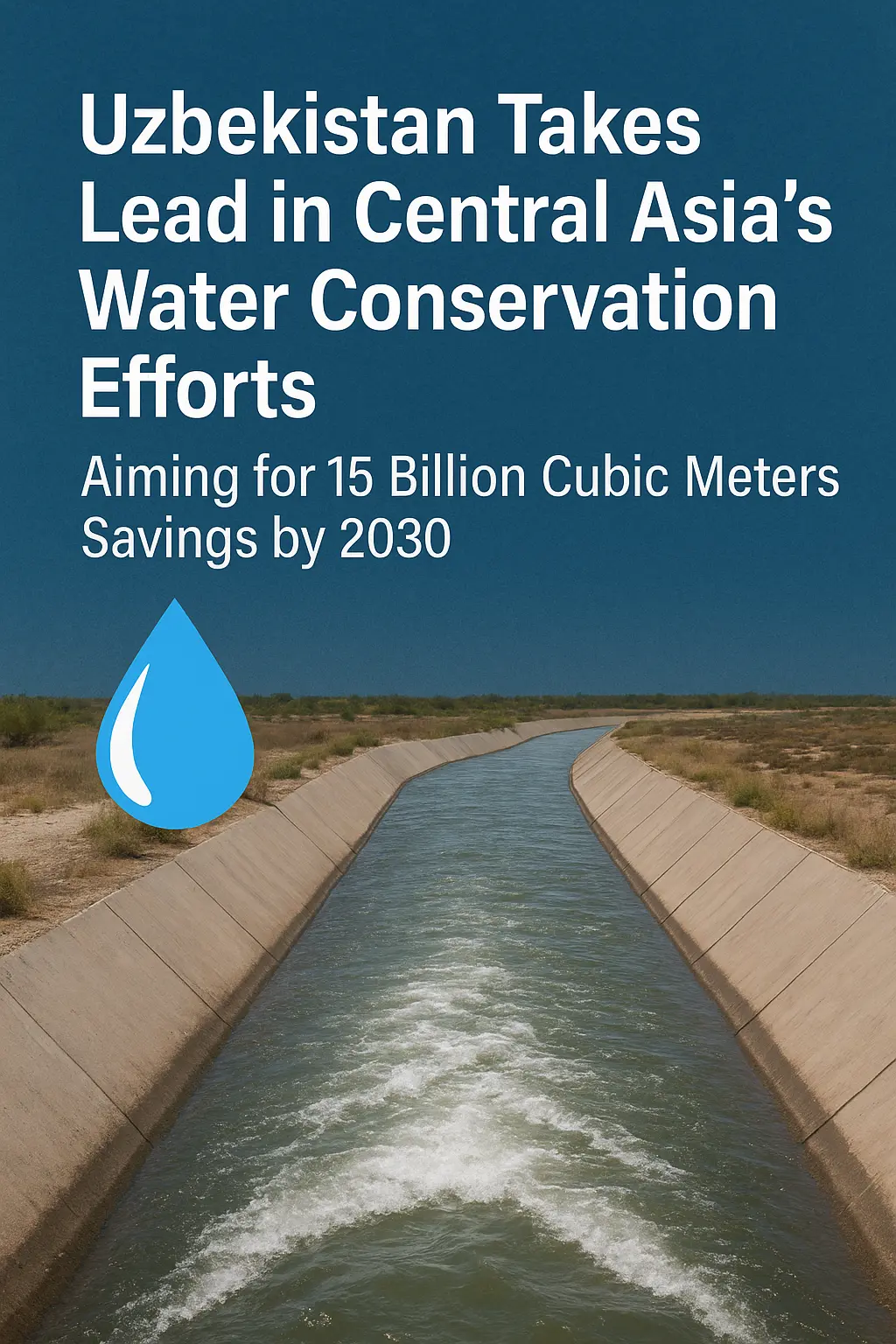
Uzbekistan is emerging as a regional leader in water conservation, setting a new benchmark for sustainable resource management in Central Asia. With bold reforms, advanced technology, and large-scale infrastructure projects, the country is on track to save 15 billion cubic meters of water annually by 2030, significantly reducing the impact of climate change on its water supply.
Over a decade ago, international climate experts warned that Central Asia could face severe water shortages due to reduced rainfall, melting glaciers, and rising temperatures. Projections indicated a 5% decline in water resources by 2025 and up to 10% by 2030.
Speaking on the issue, Uzbekistan’s Minister of Water Management, Shavkat Khamrayev, highlighted President Shavkat Mirziyoyev’s directive to secure water access for citizens and counter shortages caused by climate change.
Impressive Progress in Water Savings
The country’s conservation drive is already producing remarkable results:
2023: 7 billion cubic meters saved
2024: 8 billion cubic meters saved
2025 (projected): 10 billion cubic meters saved
By the end of the decade, the annual savings target will reach 15 billion cubic meters, aligning with earlier shortage forecasts.
Infrastructure Upgrades Driving Change
Cities such as Nukus and Gulistan have seen visible improvements thanks to projects like canal lining, advanced drainage systems, and vertical wells. These upgrades have lowered groundwater levels, prevented flooding, and boosted irrigation efficiency.
Similar developments in Urgench, Naryn, and other regions—supported by financing from the Islamic Development Bank, World Bank, and Asian Development Bank—have reduced dependence on expensive pumping stations and enhanced water flow efficiency.
2024: A Breakthrough Year for Canal Lining
Natural water channels in Uzbekistan lose around 14 billion cubic meters annually. Recognizing this challenge, 2024 was declared a milestone year for canal lining.
555 km of canals reconstructed with state funding worth 676.7 billion soums
13,500 km of internal irrigation networks rehabilitated by farms and clusters
Adoption of Modern Irrigation Technologies
Over the last seven years, nearly half of Uzbekistan’s 4.3 million hectares of irrigated farmland has been equipped with water-saving systems like drip irrigation. Local manufacturing of irrigation equipment—expanding from just 3 producers in 2019 to over 60 today—has helped reduce costs and ensure easy maintenance.
Cutting Energy Costs in the Water Sector
The modernization of pumping stations and introduction of energy-efficient technologies have lowered electricity consumption in the water sector from 8.3 billion kWh in 2017 to 6.5 billion in 2024. The next step in 2025 will be upgrading medium and small pumps to cut costs further.
Smart Water Management Through Digitalization
Digital innovation is at the heart of Uzbekistan’s water management reforms.
Over 13,000 water-gauging stations connected to the Smart Water system
10,296 reclamation wells monitoring groundwater
Nearly 1,750 pumping stations with automated water usage controls
From Poverty to Prosperity: Rural Development
Under President Mirziyoyev’s “From Poverty to Prosperity” program, 3.2 trillion soums have been allocated for improving irrigation, electricity, internet connectivity, roads, and other infrastructure in 1,000 underdeveloped communities.
By 2025, the government aims to complete:
1,882 km of irrigation networks
380 km of pipelines
818 wells to enhance water supply for 467,000 households
Call for Regional Cooperation
Minister Khamriya emphasized that Uzbekistan’s vision goes beyond national boundaries. He called for a Regional Program for Water-Saving Technologies in Central Asia, stressing that sustainable water management is crucial for peace, prosperity, and food security in the region.